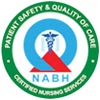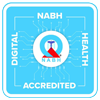
GUIDE TO NUCLEAR MEDICINE IMAGING
December 20, 2023
Nuclear medicine is a specialized area of radiology that utilizes minute amounts of radioactive materials, known as radiopharmaceuticals, to examine organ function and structure. This multidisciplinary field combines chemistry, physics, mathematics, computer technology, and medicine. Unlike traditional X-rays that pass through soft tissues, nuclear medicine allows for the visualization of organ and tissue structure as well as function, enabling the early detection and treatment of diseases.
Principles of Nuclear Medicine Imaging
In nuclear medicine imaging, a small quantity of a radioactive substance, called a radionuclide or radiopharmaceutical, is administered to the patient. The choice of radionuclide depends on the specific study and the body part under examination. Once absorbed by the body tissue, the radionuclide emits radiation, which is detected by a gamma camera. The resulting digital signals are processed and stored by a computer.
Applications of Nuclear Medicine Imaging
Nuclear medicine imaging allows healthcare providers to assess and diagnose various conditions, including tumors, infections, hematomas, organ enlargement, and cysts. The areas with increased radionuclide absorption are termed "hot spots," while areas with less absorption, appearing less bright on the scan, are referred to as "cold spots."
Common nuclear medicine scans include:
- Renal Scans: Examination of the kidneys to detect abnormalities in function or obstruction of renal blood flow.
- Thyroid Scans: Evaluation of thyroid function and assessment of thyroid nodules or masses.
- Bone Scans: Evaluation of degenerative changes, arthritis, bone diseases, tumors, and the cause of bone pain or inflammation.
- Gallium Scans: Diagnosis of active infectious or inflammatory diseases, tumors, and abscesses.
- Heart Scans: Identification of abnormal blood flow to the heart, assessment of heart muscle damage post-heart attack, and measurement of heart function.
- Brain Scans: Investigation of brain-related issues and blood circulation to the brain.
- Breast Scans: Often used in conjunction with mammograms to locate cancerous tissue in the breast.
Imaging Techniques
In nuclear medicine, imaging techniques include planar imaging, where the gamma camera remains stationary and produces 2D images, and Single Photon Emission Computed Tomography (SPECT), which generates axial "slices" of the organ by rotating around the patient. Some instances, such as Positron Emission Tomography (PET) scans, can produce three-dimensional (3D) images using SPECT data.
Nuclear medicine plays a crucial role in the early detection and management of various medical conditions, contributing valuable information about organ function and structure.
Recent Blogs
- Factors Contributing to Infertility
- Advantages of Robotic Surgery
- What is Robotic Surgery? Conditions Where Robotic Surgery Can Be Used
- Robotic Surgical Systems
- Types of Robotic Surgeries
- Causes of Male and Female Infertility
- What Is Male Infertility? Treatments For Male Infertility
- Superfoods That Can Boost Your Chances of IVF Success
- 5 Myths Over IVF
- What Are The Do’s And Don’ts For The Embryo Transfer Process?
- What are the different Cardiology Subspecialties?
- What is the difference between Invasive, Non Invasive and Interventional Cardiology?
- What is the difference between Cardiologist and Cardiothoracic Surgeon?
- What Are the Different Types of Heart Surgery and Their Purposes?
- Types of nuclear cardiology tests
2023
- December (6)
- November (8)
- Cardiac Catheterization: When Is It Required?
- Types Of Pediatric Cardiology Test
- Tips For Preventing Heart Problems In Kids
- Advances In The Diagnosis Of Congenital Heart Disease In Children
- Signs Of Heart Problems In Children
- What Is A Pediatric Cardiologist?
- Understanding Congenital Heart Defects In Children
- Pediatric Cardiac Surgery: Types And Considerations
- September (7)
- Lifestyle Changes To Prevent Diabetes
- New Innovative Advances In Diabetes Treatment
- The Link Between Obesity And Diabetes
- Monitoring Blood Sugar At Home
- The Importance Of Regular Diabetes Check-ups
- Understanding Diabetes: Types, Causes, Symptoms & Treatment
- Lower Blood Sugar Naturally: Managing Blood Sugar Through Diet
- August (8)
- What’s The Difference Between A Neurologist And Neurosurgeon?
- Dementia: Causes, Symptoms, Diagnosis And Treatment
- Seizures: Causes, Symptoms, Diagnosis And Treatment
- Epilepsy: Causes, Symptoms, Diagnosis And Treatment
- Is Autism A Neurological Disorder? Causes, Symptoms & Diagnosis
- Pediatric Neurology: Neurological Disorders In Pediatrics
- What Are The Most Common Neurological Disorders?
- Types Of Neurosurgery: Overview, Procedure & Costs
- July (11)
- Types of Cardiac Stents
- Types of nuclear cardiology tests
- What Are the Different Types of Heart Surgery and Their Purposes?
- What is the difference between Cardiologist and Cardiothoracic Surgeon?
- What is the difference between Invasive, Non Invasive and Interventional Cardiology?
- What are the different Cardiology Subspecialties?
- What Are The Do’s And Don’ts For The Embryo Transfer Process?
- 5 Myths Over IVF
- Superfoods That Can Boost Your Chances of IVF Success
- What Is Male Infertility? Treatments For Male Infertility
- Causes of Male and Female Infertility
- April (4)
- March (1)
-

Share with us
Click Here -

Organ Transplantation
Click Here
Copyrights © 2025 PSG Hospitals. All Rights Reserved.








